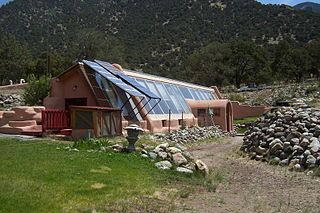From Guest Blogger "Applied Environmentalist" — Does Your Home Make You a Green-emy?
It’s not news that there’s a growing trend towards building green homes, but what if you live in a home that’s not so green-friendly? Well, for starters, you’re not alone. In the U.S., there are about 125 million single-family homes with the majority being built before energy-efficient developments, according to the National Association of Home Builders. Don’t panic, it’s not too late to come to the greener side, and no you don’t have to demolish your green-less home and re-build a new one. Homeowners that want to make the switch to a greener home should consider a few modest upgrades that will put them on the right path to becoming a green-hero.
Start with an energy audit. An energy audit is exactly what you need when you’re looking to improve your home’s energy efficiency. An energy assessment will give you an evaluation on your home’s green status. It will determine where and how energy is being lost, which systems are operating inefficiently, and what cost effective measures can be taken to better green your home.
Upgrade or replace windows. A significant source of heat loss in homes comes from windows that are more than 20 years old. Additionally, single-pane windows are not nearly as efficient at keeping heat in and cold out as multi-layered glass windows are. You should consider all the factors when upgrading or replacing your windows: climate, energy, design and style.
Insulate your home. You will slow the rate of heat-flow out of the house during the winter, and in the house during the summer with a well insulated home. If you have a poorly insulated home or you have more-or-less wall cavities (such as stud walls), blown-in insulation will improve your comfort and will save you money by cutting utility costs.
Smarter Siding. If your home needs upgraded siding, begin with choosing sustainable siding. When choosing a siding consider these factors: how long will the material last; is the material recyclable; and if the material is readily biodegradable in landfills. Another key factor to consider is maintenance. High-maintenance siding will require regular upkeep, which means using additional resources and energy over their life-cycle.
These are just a few modest upgrades to think about when making the switch to become a green-homeowner. Start with an energy audit to determine the needed upgrades and go from there. Create a green plan that will fit within your budget and work towards your goal – whether you want to completely turn your home green or make a few changes to improve its energy efficiency. If you are in the New England area and have questions about green home improvements, Neponset Valley Construction team works with green-friendly materials and provides a free energy audit.

